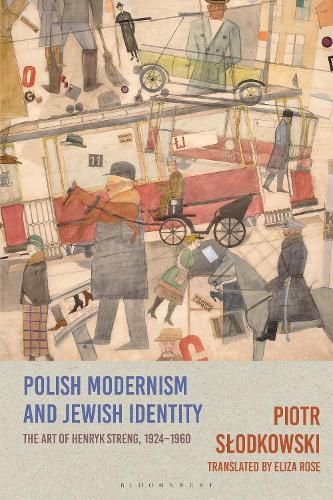Readings Newsletter
Become a Readings Member to make your shopping experience even easier.
Sign in or sign up for free!
You’re not far away from qualifying for FREE standard shipping within Australia
You’ve qualified for FREE standard shipping within Australia
The cart is loading…






Modernist painter, socialist realist, Holocaust survivor, and student of the Parisian Avant Garde, Jewish-Polish artist Henryk Streng was extraordinary for his aesthetic innovation during the two major traumas of 20th-century European history, the Holocaust and Stalinism. Yet his legacy in the development of European modernism is rarely acknowledged. In this book, inspired by the 2021 exhibition at the Museum of Modern Art in Warsaw, Piotr Slodkowski demonstrates that the work of Streng disrupts established notions of 20th-century Polish art, connecting local Polish art history with wider 20th-century artistic movements and styles.
Traversing the 1920s Academie Moderne, hubs of creativity in interwar Poland, Nazi concentration camps, and the Polish People's Republic under Soviet influence, this book reveals the changing artistic phenomena of Poland between the 1920s and 1950s, illustrating how Streng drew on his Jewish-Polish identity and the legacy of genocide in his work. Rather than deferring to the French Avant Garde, Slodkowski sheds light on regional expressions of modernism and emphasises the complexity of identity and creativity in 20th-century Poland. In doing so, this book brings Streng out of the shadows and into wider considerations of modernist European art and its development.
$9.00 standard shipping within Australia
FREE standard shipping within Australia for orders over $100.00
Express & International shipping calculated at checkout
Modernist painter, socialist realist, Holocaust survivor, and student of the Parisian Avant Garde, Jewish-Polish artist Henryk Streng was extraordinary for his aesthetic innovation during the two major traumas of 20th-century European history, the Holocaust and Stalinism. Yet his legacy in the development of European modernism is rarely acknowledged. In this book, inspired by the 2021 exhibition at the Museum of Modern Art in Warsaw, Piotr Slodkowski demonstrates that the work of Streng disrupts established notions of 20th-century Polish art, connecting local Polish art history with wider 20th-century artistic movements and styles.
Traversing the 1920s Academie Moderne, hubs of creativity in interwar Poland, Nazi concentration camps, and the Polish People's Republic under Soviet influence, this book reveals the changing artistic phenomena of Poland between the 1920s and 1950s, illustrating how Streng drew on his Jewish-Polish identity and the legacy of genocide in his work. Rather than deferring to the French Avant Garde, Slodkowski sheds light on regional expressions of modernism and emphasises the complexity of identity and creativity in 20th-century Poland. In doing so, this book brings Streng out of the shadows and into wider considerations of modernist European art and its development.